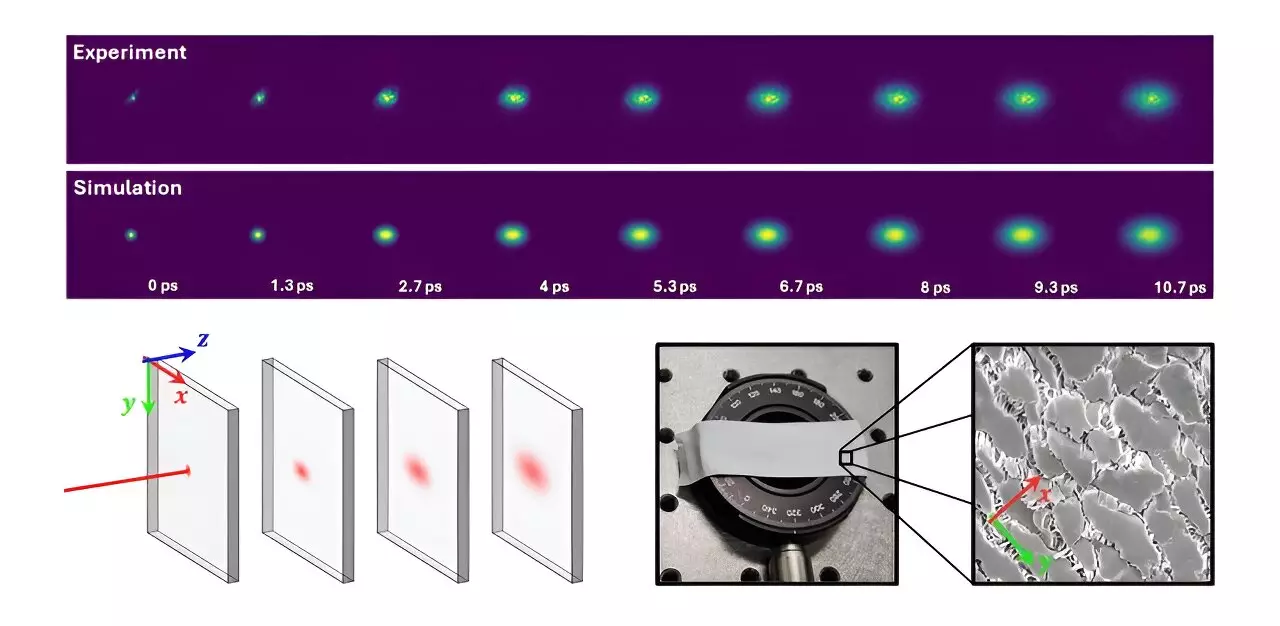A thorough understanding of how light interacts with materials is fundamentally important across a host of disciplines, from medical diagnostics to industrial manufacturing. The behavior of light as it travels through materials can dictate the efficacy of imaging technologies and influence production processes. However, the complexities of materials—particularly those with anisotropic properties—complicate this understanding. Anisotropic materials scatter light in different directions depending on their internal structure, resulting in variations that have historically posed challenges in measuring and analyzing their optical properties. This intricate phenomenon necessitates advanced study techniques to yield accurate results.
In a groundbreaking study published in Advanced Photonics Nexus, a team of scientists at the European Laboratory for Nonlinear Spectroscopy (LENS) unveiled a novel method to analyze anisotropic materials. Their approach synergistically combines time-domain transmittance measurements with sophisticated Monte Carlo simulations, allowing researchers to capture a far more comprehensive understanding of light behavior within these complex materials. By employing this method, they aimed not only to study materials but to challenge the existing paradigms that have often oversimplified the nature of light interaction.
The researchers took on Teflon tape—known for its widespread use in industrial applications—and paper, a material characterized by its structural anisotropy due to the alignment of cellulose fibers. These choices reflect a commitment to practical relevance, as both materials serve essential functions in various industries. Utilizing a transient imaging technique, they investigated how the light pattern evolved over time when subjected to ultrashort light pulses, leading to insights that had previously been unattainable.
The research unveiled critical information regarding the diffusion of light across different directional axes in both Teflon tape and paper. For the first time, the team successfully retrieved the complete scattering tensor coefficients for these materials, a feat that had not been accomplished before in such detail. The ability to measure anisotropic scattering in this manner is not merely an academic achievement but holds practical implications for the fields that depend on precision in light-matter interaction.
According to Dr. Lorenzo Pattelli from the Italian National Institute of Metrological Research (INRiM), the findings underscore the crucial role that anisotropy plays in material analysis. “The majority of scattering materials exhibit some degree of anisotropic behavior. Yet, a significant number of studies have overlooked this fact, often simplifying their models to assume isotropy,” Dr. Pattelli noted. This misrepresentation can lead to substantial inaccuracies in reported scattering coefficients, as past models failed to account for the inherent complexities.
The advancement introduced by this study can catalyze a new era of material characterization, particularly for those with complex structures such as biological tissues. The method not only promises an enhancement of diagnostic techniques predicated on light scattering but may revolutionize practices in various sectors of material science and engineering. Such improvements are increasingly vital as the demand for precision in these areas grows.
Moreover, as the study points out, the implications extend beyond mere measurement—by adopting a more nuanced approach to these materials, researchers can develop targeted applications. This can include more accurate imaging techniques in medical diagnostics or improved manufacturing processes that leverage the unique properties of anisotropic materials.
The recent innovations in the study of anisotropic materials illustrate a promise for enhanced understanding and analysis of light scattering. By addressing the complexities associated with anisotropic behavior in materials, this research equips scientists and industry professionals with the tools necessary for more accurate interpretations and applications. As this field evolves, the embodiment of such sophisticated techniques will likely become a cornerstone in various scientific and industrial domains, illustrating the continuous need for refining and challenging existing methodologies to uncover the hidden nuances of our material world.


Leave a Reply